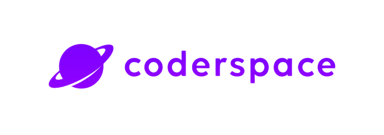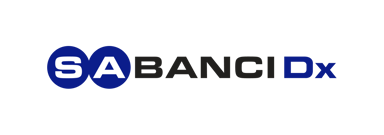
Leveraging Employee Referrals for High-Quality Recruitment
Employee referrals have been considered an essential aspect of effective recruitment.
By using their current employees' networks and relationships, organizations can reduce recruitment costs, improve employee retention, and significantly increase the quality of their future recruits.
In our article, we will explain the importance of referral programs, their advantages, and how to design one effectively with tactics to motivate staff engagement. 🌟
Understanding the Power of Employee Referrals 💼
Employee referrals are a potent weapon in the recruitment drive.
The act of employees referring candidates in their network is endorsing suitability for the position and working successfully under pressure.
The personal recommendation often leads to better hires, and here is why:
- Better Cultural Fit: With more information about the workplace and the candidate's personality, it is usually easier for a referred candidate to fit into the organization's culture.
- Retention Rates: Higher retention rates have been observed among employee referrals than employees solicited through other means of hiring. They may culturally fit in better and have a more robust support network than non-referred employees.
- Faster Hiring Process: Usually, the hiring process becomes accelerated since a referred employee would have undergone initial screening and interviewing.
Benefits of Employee Referral Programs

Employee referral programs are a formalized approach to capitalizing on employees' networks. Some of the benefits of such programs include the following:
- Cost-Effective: recruitment through agencies, job boards, and advertising may be quite expensive if one looks at it from traditional recruitment methods. Employee recommendations can help to a great extent in cutting down on these costs.
- High-Quality Candidates: Referred candidates are of better quality. Employees are more likely to refer to a better match, given that they know the skills and personality types desirable for organizational success.
- Boosted Morale: When workers feel valued and trusted in being part of their hire, they are likely to become engaged and will have more morale.
- A Broad Reach: Using their professional and personal networks, employees can target passive applicants who are not necessarily looking for a new job but might make a change given the right opportunity.
A successful employee referral program needs to be carefully planned and implemented.
Clear Guidelines
A clear description of the rules of the employee referral process. It includes the explanation of:
- Enumerate the positions that can be referred to under Eligible Positions
- Describe the procedures that are required for staff members to make a referral
- Clearly indicate the benchmarks against which shortlisted applicants will be assessed
Incentive Structures
Offer lucrative motives that would entice the employees to view the referral program positively. Such motives can include the following:
- Financial Rewards: Money rewarded for productive workers.
- Non-financial rewards: Gifts, extra days off, or public acknowledgment of efforts.
Communication and Promotion
This underscores the necessity to keep informing staff about the referral program. Promote the referral program through internal publications, meetings, and referral portals.
Tracking and Analytics
Build monitoring systems that can track how effective the referral programs are. Mine data on retention rates, the quantity of employee referrals, and the quality of hires to make the program better, one iteration at a time.
Incentivizing Staff to Participate in Referral Programs

A successful employee referral program depends on well-designed incentives for participation.
Monetary Incentives
One of the most common and best methods of driving referrals is through cash incentives. The award should be large enough to get employees interested but small enough to stay within the overall recruitment budget.
Recognition and Awards
Recognition within the community can be a powerful motive. Consider recognizing staff who have successfully recommended applicants at meetings or in corporate publications. Certificates and awards are also applicable non-cash incentive
Competitive Elements
Inject a competitive element to the program for referring. For example, provide incentives to the most successful referrer in a quarter or a year.
Streamlined Process
Make the referral process as clear and easy as possible. A very long or cumbersome process will discourage people from referring. Enable an easy process using user-friendly websites or portals that enable personnel to refer people and track leads comfortably.
Final Thoughts
Employee recommendations can genuinely revolutionize your hiring process.
With the networks of your current employees, you are sure to improve the numbers on employee retention, save on recruitment costs, and raise the quality of new hires.
Such benefits can be maximized when a well-designed referral program offering attractive rewards is adequately advertised and executed through regular announcements and clear guideline establishment.
To keep the staff motivated and engaged, one should keep the process simple and recognize their contributions.
Difficulty coordinating with your hiring team? Hirex fosters collaboration, allowing your team to work together effortlessly.
Get a demo
- Quickly find top candidates with smart application management
- Improve team collaboration using built-in communication and workflows
- Offer a smooth candidate experience to strengthen your employer brand
- Count on 24/7 support for a hassle-free hiring process
- Quickly find top candidates with smart application management
- Improve team collaboration using built-in communication and workflows
- Offer a smooth candidate experience to strengthen your employer brand
- Count on 24/7 support for a hassle-free hiring process
"We truly felt the speed difference. Everything was smoother, and candidate feedback was much more positive. It made our jobs easier."

Trusted by 100+ teams
Get Informed,F.A.Q.
Revolutionize your hiring process with our transformative Applicant Tracking System (ATS.)
Suggested Blog Posts

40+ Employee Wellness Statistics

12 Employee Engagement Statistics to Track in 2026
















